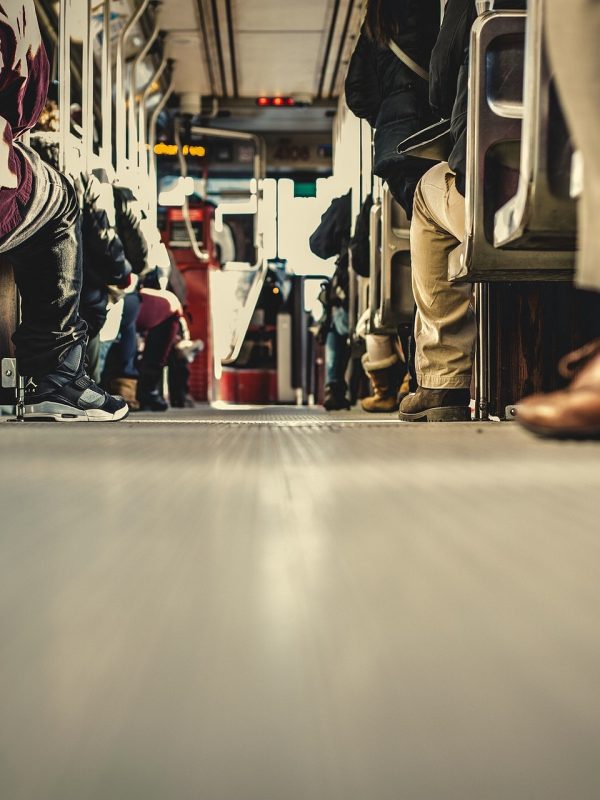Why Study in USA?
- The USA has one of the finest education systems in the world, with excellent programs across all disciplines.
- Universities in the USA are well-funded, with high academic standards and rigorous requirements that they instil in their students.
- American universities are world leaders in terms of technology and scientific advancements, and are dedicated to providing the same resources to students.
- The USA higher education system offers flexible choices within a program and the opportunity to change majors or opt for multiple specializations, enabling students to meet their needs and interests.
- USA universities welcome international students and have support systems to help them adapt comfortably to life in the
- Almost every university in the U.S. takes diversity as one of its defining pillars.
- In the USA, international students can work up to 20 hours per week while school is in session, and full time during holidays and vacation periods.
- In the USA, students at the graduate level gain valuable experience in research and teaching through the many assistantship programs available.
USA at a Glance
The United States of America is a federal republic consisting of 50 states, a federal district (Washington, D.C., the capital city of the United States), five major territories, and various minor islands. The 48 contiguous states and Washington, D.C., are in central North America between Canada and Mexico; the two other states, Alaska and Hawaii, are in the northwestern part of North America and an archipelago in the mid-Pacific, respectively, while the territories are scattered throughout the Pacific Ocean and the Caribbean Sea.

| Name | Capital | Largest City | Established |
| Alabama | Montgomery | Birmingham | Dec 14, 1819 |
| Alaska | Juneau | Anchorage | Jan 3, 1959 |
| Arizona | Phoenix | Phoenix | Feb 14, 1912 |
| Arkansas | Little Rock | Little Rock | Jun 15, 1836 |
| California | Sacramento | Los Angeles | Sep 9, 1850 |
| Colorado | Denver | Denver | Aug 1, 1876 |
| Connecticut | Hartford | Bridgeport | Jan 9, 1788 |
| Delaware | Dover | Wilmington | Dec 7, 1787 |
| Florida | Tallahassee | Jacksonville | Mar 3, 1845 |
| Georgia | Atlanta | Atlanta | Jan 2, 1788 |
| Hawaii | Honolulu | Honolulu | Aug 21, 1959 |
| Idaho | Boise | Boise | Jul 3, 1890 |
| Illinois | Springfield | Chicago | Dec 3, 1818 |
| Indiana | Indianapolis | Indianapolis | Dec 11, 1816 |
| Iowa | Des Moines | Des Moines | Dec 28, 1846 |
| Kansas | Topeka | Wichita | Jan 29, 1861 |
| Kentucky | Frankfort | Louisville | Jun 1, 1792 |
| Louisiana | Baton Rouge | New Orleans | Apr 30, 1812 |
| Maine | Augusta | Portland | Mar 15, 1820 |
| Maryland | Annapolis | Baltimore | Apr 28, 1788 |
| Massachusetts | Boston | Boston | Feb 6, 1788 |
| Michigan | Lansing | Detroit | Jan 26, 1837 |
| Minnesota | St. Paul | Minneapolis | May 11, 1858 |
| Mississippi | Jackson | Jackson | Dec 10, 1817 |
| Missouri | Jefferson City | Kansas City | Aug 10, 1821 |
| Montana | Helena | Billings | Nov 8, 1889 |
| Nebraska | Lincoln | Omaha | Mar 1, 1867 |
| Nevada | Carson City | Las Vegas | Oct 31, 1864 |
| New Hampshire | Concord | Manchester | Jun 21, 1788 |
| New Jersey | Trenton | Newark | Dec 18, 1787 |
| New Mexico | Santa Fe | Albuquerque | Jan 6, 1912 |
| New York | Albany | New York | Jul 26, 1788 |
| North Carolina | Raleigh | Charlotte | Nov 21, 1789 |
| North Dakota | Bismarck | Fargo | Nov 2, 1889 |
| Ohio | Columbus | Columbus | Mar 1, 1803 |
| Oklahoma | Oklahoma City | Oklahoma City | Nov 16, 1907 |
| Oregon | Salem | Portland | Feb 14, 1859 |
| Pennsylvania | Harrisburg | Philadelphia | Dec 12, 1787 |
| Rhode Island | Providence | Providence | May 29,1790 |
| South Carolina | Columbia | Charleston | May 23, 1788 |
| South Dakota | Pierre | Sioux Falls | Nov 2, 1889 |
| Tennessee | Nashville | Nashville | Jun 1, 1796 |
| Texas | Austin | Houston | Dec 29, 1845 |
| Utah | Salt Lake City | Salt Lake City | Jan 4, 1896 |
| Vermont | Montpelier | Burlington | Mar 4, 1791 |
| Virginia | Richmond | Virginia Beach | Jun 25, 1788 |
| Washington | Olympia | Seattle | Nov 11, 1889 |
| West Virginia | Charleston | Charleston | Jun 20, 1863 |
| Wisconsin | Madison | Milwaukee | May 29, 1848 |
| Wyoming | Cheyenne | Cheyenne | Jul 10, 1890 |
| Name | Established |
| District of Columbia (Washington, D.C.) | Jul 16, 1790 |
| Name | Capital | Acquired |
| American Samoa | Pago Pago | 1900 |
| Guam | Hagåtña | 1899 |
| Northern Mariana Island | Saipan | 1986 |
| Puerto Rico | San Juan | 1899 |
| U.S. Virgin Islands | Charlotte Amalie | 1917 |
| Name | Acquired |
| Baker Island | 1856 |
| Howland Island | 1858 |
| Jarvis Island | 1856 |
| Johnston Atoll | 1859 |
| Kingman Reef | 1860 |
| Midway Atoll | 1867 |
| Navassa Island | 1858 |
| Palmyra Atoll | 1898 |
| Wake Island | 1899 |
| Name | Acquired |
| Bajo Nuevo Bank (Petrel Island) | 1869 |
| Serranilla Bank | 1880 |
Accommodation
Some American schools offer accommodations for international students on-campus, or near the school’s classrooms, libraries and other facilities. “Dormitories” are buildings with many rooms for sleeping and living, often with two or three people (of the same gender) per room. Dormitory residents typically share large bathrooms which include showers and toilets. Many first-year students prefer to live in on-campus dormitories because they are convenient to both academic and social activities. Another advantage is that it is not likely that you will need a car to commute to campus.
Ask new friends and other students if they have any suggestions for a good apartment. Check classified advertisements in the local newspaper (Sundays usually have more apartment listings than other days of the week). If all else fails, contact a real estate agent for assistance – though beware of unspecified fees for the service.
Before committing to a lease, or an agreement to rent an apartment, spend some time in the area to decide if it feels safe and convenient to places like school buildings and grocery stores. Read the lease carefully before signing.
Homestays are a viable option for students under the age of 18, especially those who are nervous about leaving home and living in a new country. In a homestay arrangement, you will be placed with an American family within 20 to 45 minutes from your campus. You will have your own room, and meals will be provided.
Living with an American family will allow you to fully immerse yourself in American culture as you adapt to the life of the family with whom you are living. You can benefit of the comforts of home and of a family life, even though you are far from home and in an entirely new country.

Transport
- Public Transportation. Most American cities have buses or light rail train systems. Some college may even offer a discounted monthly pass for its students.
- Taxi. Besides the classic yellow cab, most cities have app-based car services like Uber or Lyft.
- Bicycle Rentals. In any cities, bicycle rental is available and stations are often near college campuses. Bike rental is usually paid by the hour or by the day.
-
Free Shuttles. Many colleges offer free shuttles to their students around the campus. Check for routes with your school and make sure you find a place to live that is near a shuttle stop.
Banking
In the USA, banking is regulated at both the federal and state level.As of 2018, the largest banks the United States were:

Other Information
- Health Care and Insurance
- Safety
- Studying in the USA
- J-1 Visa. International students entering the USA on a J-1 visa must have adequate health insurance that fulfills requirements set forth by the US Department of State (the visa authorities).
- F-1 Visa. F-1 visa holders do not have to meet government mandated standards. They have less stringent health insurance requirements than those holding a J-1 visa, as these international students don’t have any oversight or requirements from the US government. These policies are typically determined by the educational institution the student is enrolled at.
Despite what you may have heard or have seen, the U.S. is not a dangerous country, in fact it is safe. No matter where you travel be it the U.S. or abroad there are common threads of safety that you can string along in all your travels.
Always be alert
Always observe your surroundings indiscreetly determining who is in front and behind of you. Law enforcement states that many crimes could be avoided if people would just be “alert.”
Walking at night
Avoid walking alone at night because most crimes that are committed are crimes of opportunity. Most campuses have campus police and are safe. However, when you leave the campus at night you should walk in groups or pairs. Many campuses have escort services connected with the campus police.
Valuables
One of the most popular crimes on and off campus is larceny, which is the “crime of theft.” Never, ever leave your personal belongings (i.e. purse, personal computer, books, cell phone, etc.) unattended and walk away. It only takes seconds for someone to steal these while you walked to the rest room or to a vending machine. This rule also applies to automobiles—you should never leave wallets, purses, or computers visibly on your seat while you leave your car to get gas or go into a store. Even if your door is locked, people can break your car window and grab your valuables.
Housing
Whether you live in a campus dormitory or off-campus, always lock your door and windows while you are away and at home. Never open the door for strangers—it is a part of the American culture to talk through doors without opening them if we don’t know the person. If you didn’t invite the person, don’t open the door unless it is a law enforcement official. Even then, have the officer show you his or her official badge.
Personal Information
Always protect your personal information like social security numbers, and credit card numbers. You are aware that identity theft is a worldwide problem. Identity theft comes in many forms. One major form is “scams.” You may receive e-mails from phony companies asking for your personal information. Always remember that your bank and credit card company will always communicate to you in an honest, legitimate way. Remember, they already have your credit card and bank information, and they will never ask you for your password (except when you log on to your online banking site or telebank system). Keep copies of your passports, visa, I-94 and other important documents.
If safety information is not addressed as detailed as you prefer, don’t hesitate to contact your international student office or the campus police directly. Your university is there to serve and help you. Many students have questions but are afraid to ask because they feel they are a burden. Remember, your university is in business to serve their students, and it is their pleasure and obligation to provide you with the information and resources you need to have a pleasant and successful study experience in the U.S.
- Choose your Course and School
If you are interested in study in USA, the first thing to do is research the school or program that is best for you. Only schools that are certified by the Student and Exchange Visitor Program are authorized to accept international students.
- Acceptance from School
Once you receive acceptance to a Student and Exchange Visitor Program-certified school, your designated school official (DSO) will give you a document called a Form I-20, “Certificate of Eligibility for Nonimmigrant Status”. The Form I-20 is a paper record of your information in the database called SEVIS. Each school that accepts you will mail you a Form I-20. Before you apply to pay the I-901 student fee, you must select one school and use that Form I-20 to pay the I-901 fee and to apply for the correct student visa.
- Paying your fee
Regulation requires all prospective F and M students to pay the I-901 Student and Exchange Visitor Information System (SEVIS) fee before the Department of State issues you a visa.
- Applying for a visa
After being accepted to an SEVP-certified school and getting a receipt for payment of the I-901 fee, you can apply for a visa at a U.S. embassy or consulate.
- Your trip to the USA
Before you leave for the United States, familiarize yourself with the different kinds of documents you might need. It is always a good idea to carry your original documents with you at all times. Do not put them in your checked baggage.
It is also a good idea to make at least two sets of copies of these documents: one copy to leave with your family before you depart and one copy to give to your school officials. Here is a list of the important immigration documents:
- Passport
- Visa
- Form I-20
- “Certificate of Eligibility for Nonimmigrant Status”
- Arriving in the USA
Arriving in the United States should be a smooth experience if you have everything ready.
Form I-94
The Form I-94, “Arrival/Departure Record” is a critical record. It shows that you have been legally admitted to the United States, the class of admission, and the authorized period of stay. It is very important that the information on the record is correct. Inconsistencies between the information on the Form I-94 and Student and Exchange Visitor Information System (SEVIS) records can reduce the chances of a successful systems interface. In particular, this can cause issues with status verification for Social Security numbers.
You have 30 days to enter the country before your official program start date, which is recorded in SEVIS. You must report to your school by the program start date listed on the Form I-20, “Certificate of Eligibility for Nonimmigrant Status” you received. This is one of the rules you agree to when you received your student or exchange visitor status. If you do not follow this rule, you are not maintaining your status.
It is best to contact your school immediately after entering the country so that there is no question of your arrival.
- Types of USA Student Visa
- Emergency Services
1. F Visa
This type of US student visa is for international students who are intending to pursue an academic degree at an accredited US college or university, or to study English at a university or intensive English language institute. There are three types of F visa:
- F-1 visas for full-time students.
- F-2 visas for dependents of F-1 visa holders (spouse and unmarried children under the age of 21). This includes same-sex married couples.
- F-3 visas for ‘border commuters’ – Mexican and Canadian students who reside in their country of origin while attending part- or full-time school in the US.
2. M Visa
The second category of US student visa is for international students who want to engage in non-academic or vocational study or training at an institution in the US. There are three types of M visa:
- M-1 visas for students engaging in vocational or non-academic studies.
- M-2 visas for dependents of M-1 visa holders (as in F-2 visas).
- M-3 visas for ‘border commuters’ as in F-3 visas, but for vocational or non-academic studies.
3. J Visa
Finally, this third type of US student visa is for international exchange visitors participating in programs in the US that promote cultural exchange. Whether it is to obtain medical, business or other training, all applicants must meet the eligibility criteria of the program in question and be sponsored by a private sector or government program. Holders of J visas usually stay in the US for a short period of time, perhaps one or two semesters. There are two types of J visa:
- J-1 visas for exchange students on a relevant exchange program.
- J-2 visas for dependents of J-1 visa holders (as for F-2 visas)
Familiarise yourself with the Emergency services numbers: Useful phone numbers are:
| ORGANIZATION | PHONE |
| Emergency Services – POLICE. FIRE. AMBULANCE. (free call) | 911 |
| Non-emergency Municipal Services | 311 |
| Poison Control Center | 1-800-222-1222 |
In addition, make sure that you are aware of these numbers.
Local police department – *For non-emergencies
Local fire department – *For non-emergencies
Local hospital
Doctor’s
Dentist
Pharmacy
Health insurance plan and policy number
Personal emergency contact list


